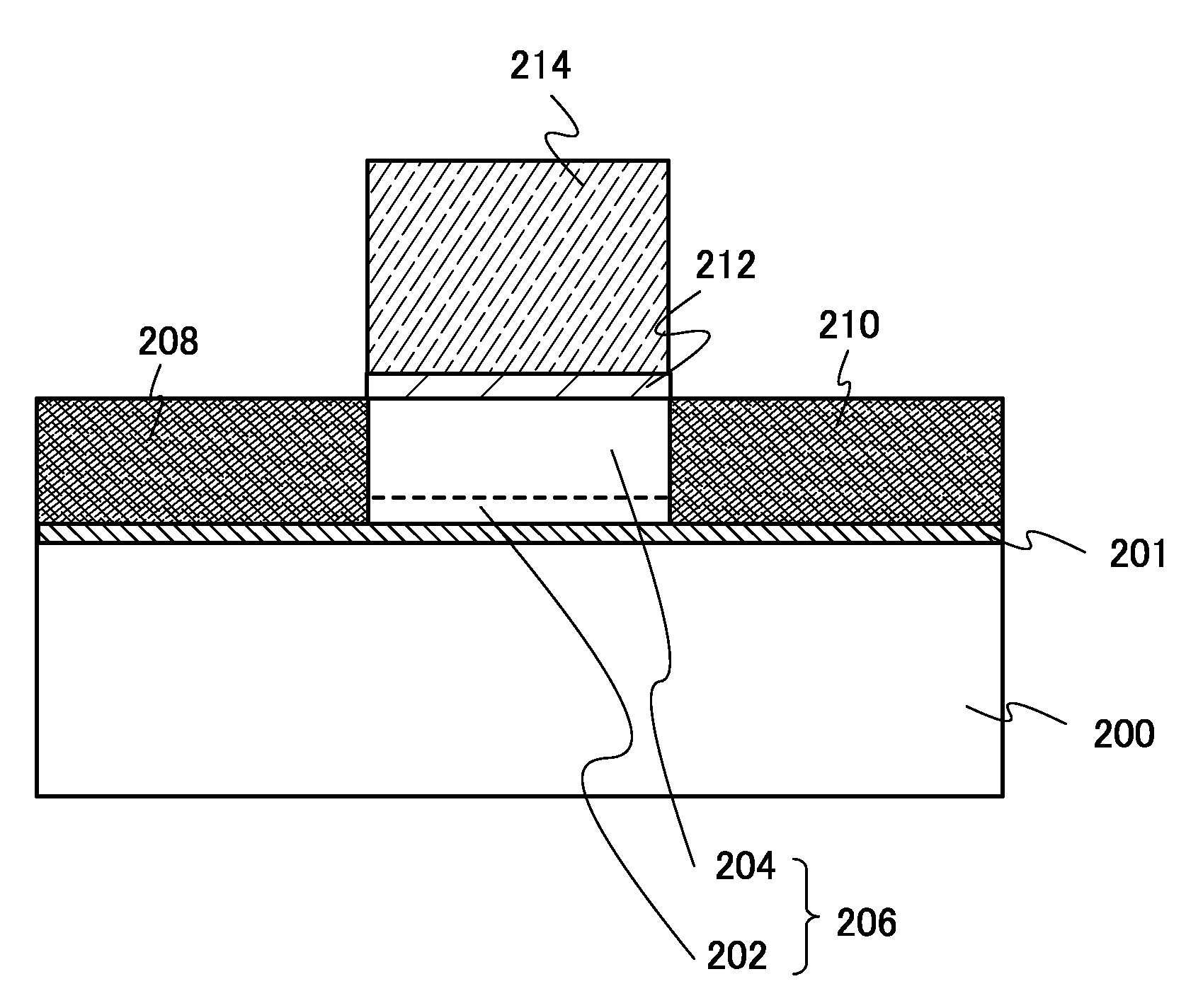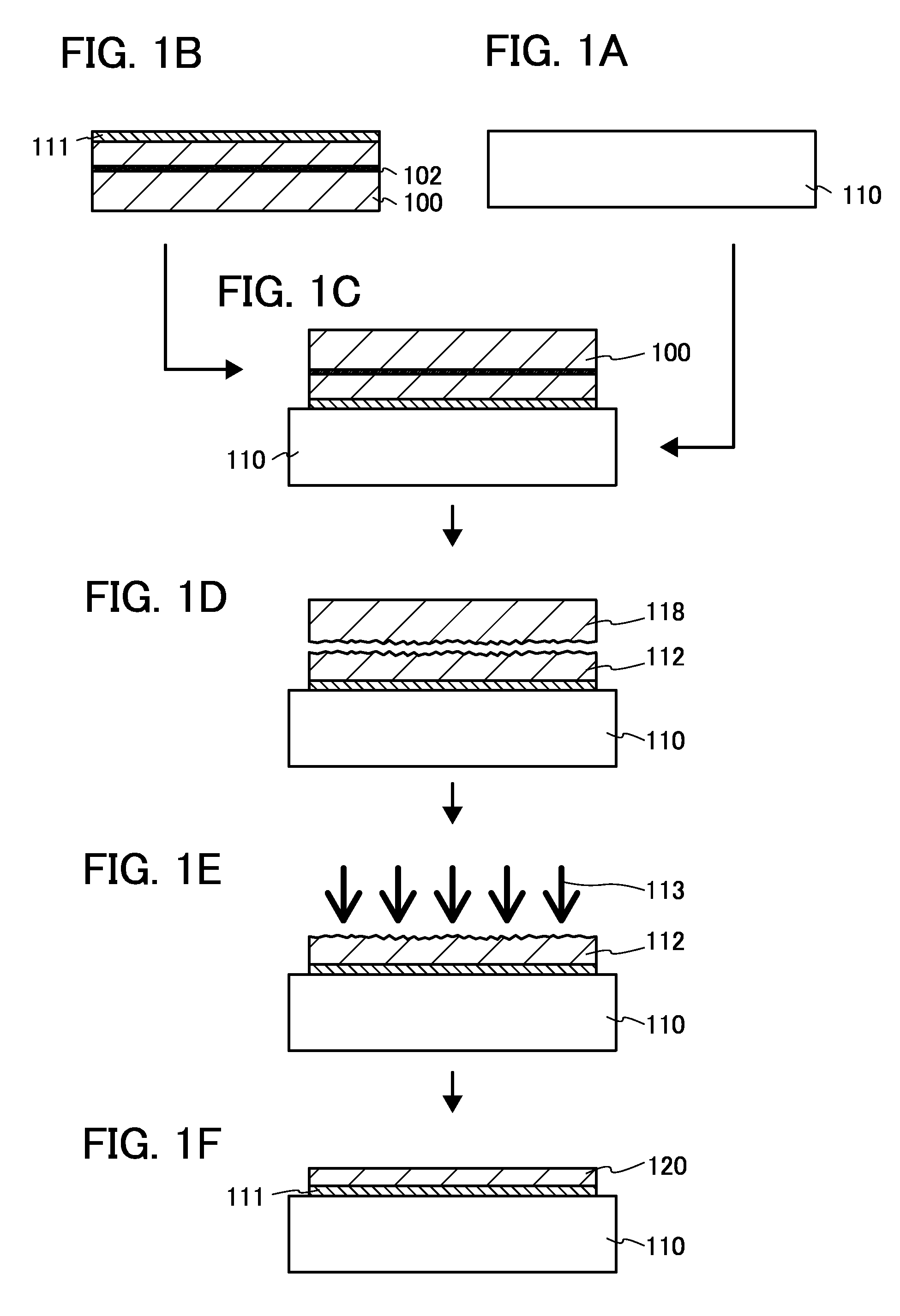Semiconductor device and method for manufacturing the same
- Summary
- Abstract
- Description
- Claims
- Application Information
AI Technical Summary
Benefits of technology
Problems solved by technology
Method used
Image
Examples
embodiment 1
[0031]In Embodiment 1, a manufacturing method of a semiconductor device according to an embodiment of the present invention will be described with reference to FIGS. 1A to 1F, FIGS. 2A to 2D, FIGS. 3A to 3D, and FIGS. 4A and 4B.
[0032]First, a base substrate (also referred to as a supporting substrate) 110 is prepared (see FIG. 1A). As the base substrate 110, a light-transmitting glass substrate used for liquid crystal display devices or the like can preferably be used. As a glass substrate, a substrate having a strain point of higher than or equal to 580° C. and lower than or equal to 680° C. (preferably, higher than or equal to 600° C. and lower than or equal to 680° C.) may be used. Further, it is preferable that the glass substrate be a non-alkali glass substrate. As a material of the non-alkali glass substrate, a glass material such as aluminosilicate glass, aluminoborosilicate glass, or barium borosilicate glass is used, for example.
[0033]Note that as the base substrate 110, a ...
embodiment 2
[0102]In Embodiment 2, a preferable thickness of a single crystal semiconductor layer in a transistor which is a semiconductor device of the present invention as manufactured in Embodiment 1, will be described with reference to FIG. 5, FIG. 6, FIGS. 7A and 7B, FIGS. 8A and 8B, FIGS. 9A to 9C, and FIGS. 10A to 10F.
[0103]FIG. 5 illustrates a cross section of the transistor manufactured in Embodiment 1, which is used for evaluating transistor characteristics in this embodiment. Here, the transistor has a single-drain structure in which sidewalls 714, a pair of low-concentration impurity regions 718, and a pair of low-concentration impurity regions 724 are not formed.
[0104]The transistor of FIG. 5 includes a base insulating layer 201 formed over a base substrate 200, a single crystal semiconductor layer 206 formed over the base insulating layer 201, a gate insulating film 212 formed over the single crystal semiconductor layer 206, and a gate electrode 214 formed over the gate insulating...
embodiment 3
[0118]A semiconductor device such as a transistor is manufactured using a semiconductor substrate according to the present invention, and a variety of electronic devices can be manufactured using this semiconductor device. Since crystal defects in the single crystal semiconductor layer provided for the semiconductor substrate according to the present invention are reduced, the local state density at an interface with a gate insulating layer can be reduced. By using this single crystal semiconductor layer as an active layer, leakage current is reduced; accordingly, a semiconductor element with improved electric characteristics can be manufactured. That is, by using a semiconductor substrate according to the present invention, a semiconductor element with high current driving capability and high reliability can be manufactured; accordingly, an electronic device as a final product can be manufactured with high throughput and favorable quality. In this embodiment, examples of applicatio...
PUM
 Login to View More
Login to View More Abstract
Description
Claims
Application Information
 Login to View More
Login to View More - R&D
- Intellectual Property
- Life Sciences
- Materials
- Tech Scout
- Unparalleled Data Quality
- Higher Quality Content
- 60% Fewer Hallucinations
Browse by: Latest US Patents, China's latest patents, Technical Efficacy Thesaurus, Application Domain, Technology Topic, Popular Technical Reports.
© 2025 PatSnap. All rights reserved.Legal|Privacy policy|Modern Slavery Act Transparency Statement|Sitemap|About US| Contact US: help@patsnap.com



